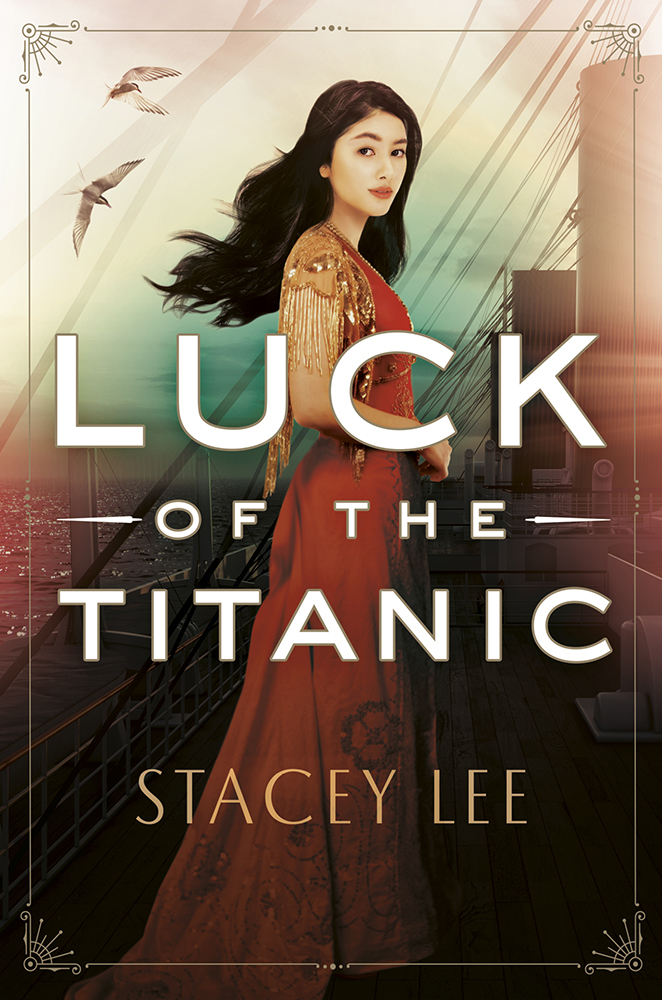Shining A Light On A Hidden History
By Stacey Lee, author of Luck of the Titanic
Even after a hundred and nine years, the infamous sinking of the Titanic continues to ignite our collective imagination, engendering hundreds of movies, cartoons, plays, poetry, books, even video games. Most are familiar with the basic elements: a spanking new first-class ocean liner, a dearth of lifeboats, a proud captain who goes down with his ship. Some might also remember the baron who supposedly paid off the crew for his own private lifeboat, the electricians who kept the lights on to the bitter end, or even the baker who got so drunk, his blood alcohol level kept him from freezing in the arctic waters. But have you heard of the sole Japanese man traveling as second class because he wasn’t allowed in first? Or the sole black passenger, a Haitian engineer, also in second-class with his family, who died that night at age twenty-five?
Incredibly, there was another group you never heard about.
Of the seven hundred survivors of the Titanic disaster, six—of an original eight—were Chinese men, probably seamen of some sort. Little is known about them, because unlike the rest of the survivors, their stories were not reported. While every other survivor was welcomed into America and given succor, these six were shipped off within twenty-four hours of arrival. The rare mentions of the Chinese passengers vilified them as cowards who took seats from women and children or dressed as women in order to sneak aboard the lifeboats, all of which were unfounded rumors.
A culture of discrimination against the Chinese, codified by the Chinese Exclusion Act, ensured that they would be written out of the story. Good thing, extracting the stories that have fallen through the cracks is my specialty.
I couldn’t find much information on these men. Though efforts to uncover these men’s stories are underway, after being shamed for surviving, many of them did not even share their stories with their own families. But the lack of information turned out to be a blessing in disguise. It freed me to imagine who they might have been, these eight third-class nobodies on their way from Southampton to the Americas. And as with all my stories, I found my way into LUCK OF THE TITANIC by examining a family tie. In this case, it was between a brother, and a sister who boards Titanic to find him, before he loses his way.
One of the privileges of being able to write books for young people is to give them reflections of themselves. What we see around us gives us a yardstick by which we can measure our self-worth, and by the same token, not seeing ourselves sends a message that we don’t belong. At the same time, I also want to provide readers with a more accurate truth of what they thought they knew. An old Indian parable tells the story of the blind men who cannot agree on what an elephant is because each has grabbed a different part of the beast. The one who has grabbed the trunk believes an elephant is a snake, while the one who has grabbed the ear believes it is a fan, and the one who has grabbed its tail thinks it’s a rope, etc. It is only after they’ve put all the parts together that they see the larger picture.
It is the same way with history. We’ve seen many sides to the Titanic disaster, from different perspectives, in different lighting. But there are still more pieces to discover. Only by digging further into the wreckage can we understand the larger picture of what happened that fateful night. And only by illuminating all parts, especially the darkest places, can we examine the truth of who was worthy of saving, and who wasn’t.
About Luck of the Titanic





